I wanted everything on Wi-Fi, but changed my mind
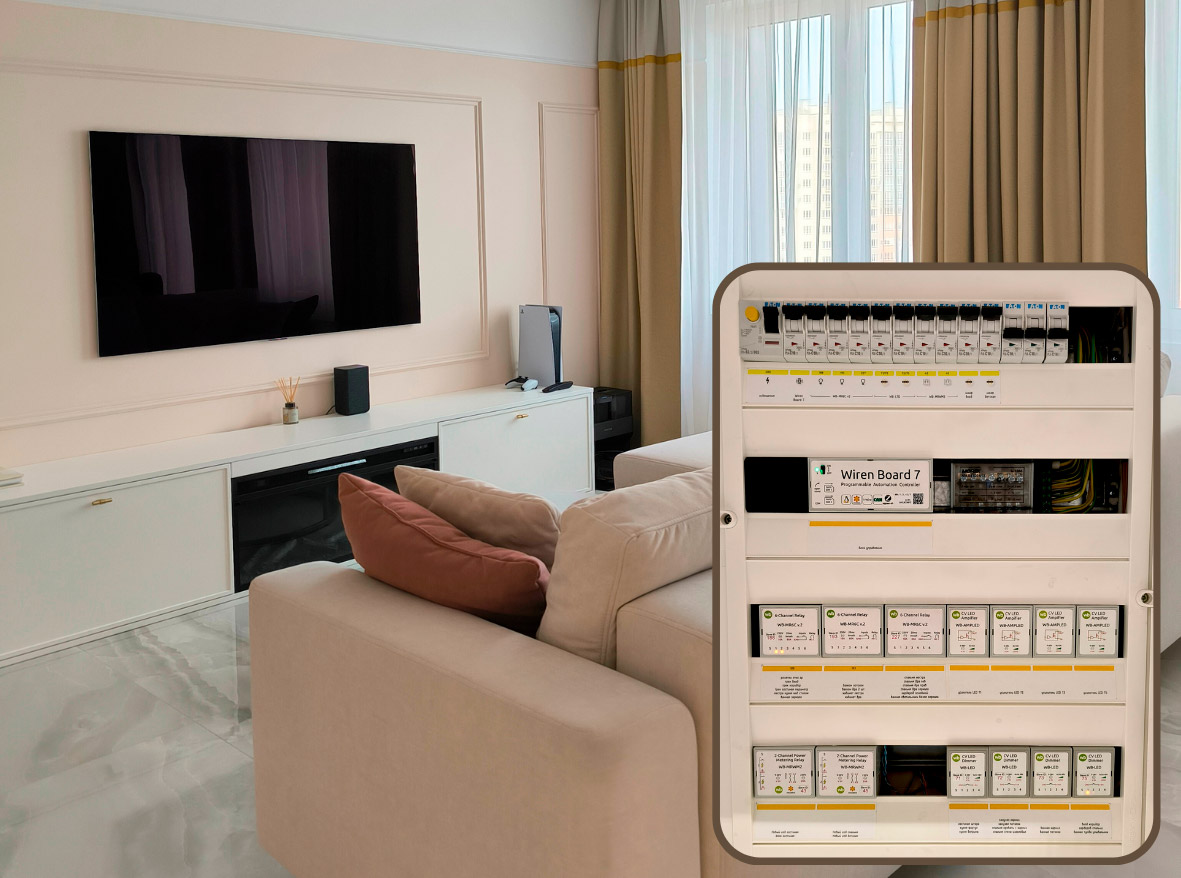
We continue to introduce readers to smart apartments. We recently wrote about Raspberry Man's apartment, which added wired dimmers to the Raspberry Pi. IT specialist Arthur from Minsk did the same.
Arthur bought a 3-room apartment of about 80 m² with a rough finish and thought about how to make it smart. There seems to be enough knowledge; you can figure out how to program a smart home on your own. All that remains is to choose technologies and platforms. The easiest way, as Arthur believed at the time, was Wi-Fi. The router has already been purchased, you can add a mesh repeater to it to improve coverage, and there is a ready-made infrastructure. Then you can purchase additional devices with Wi-Fi: air conditioning, floor heating controller, curtain drives, lamps, sensors, and other household appliances. You can use Apple HomeKit as a smart home control system, with which almost all Wi-Fi devices have integration.
However, in practice everything turned out to be not so simple. The main problem is light. It should always work at the touch of a button, even if the Wi-Fi router turns off and Apple HomeKit stops responding. It is unlikely that the family will want to sit in the dark while the smart home is being repaired. What was required here was a “reinforced concrete” and always working solution. And at the same time, it’s smart, so you can’t do without wires.
Less critical devices, such as curtain drives and underfloor heating controllers, can be connected via Wi-Fi. You can live a day without them if something happens.
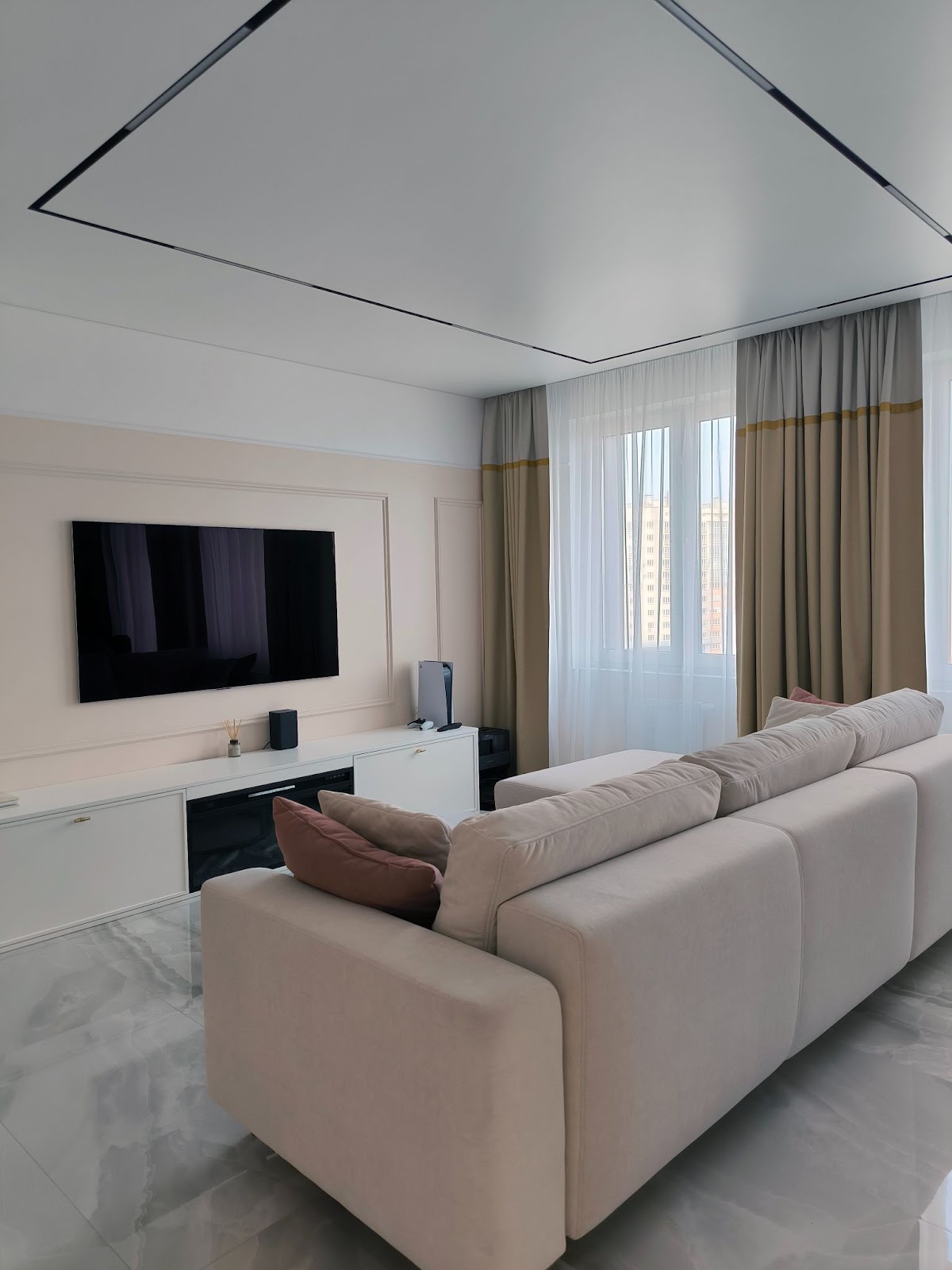
Additional photos

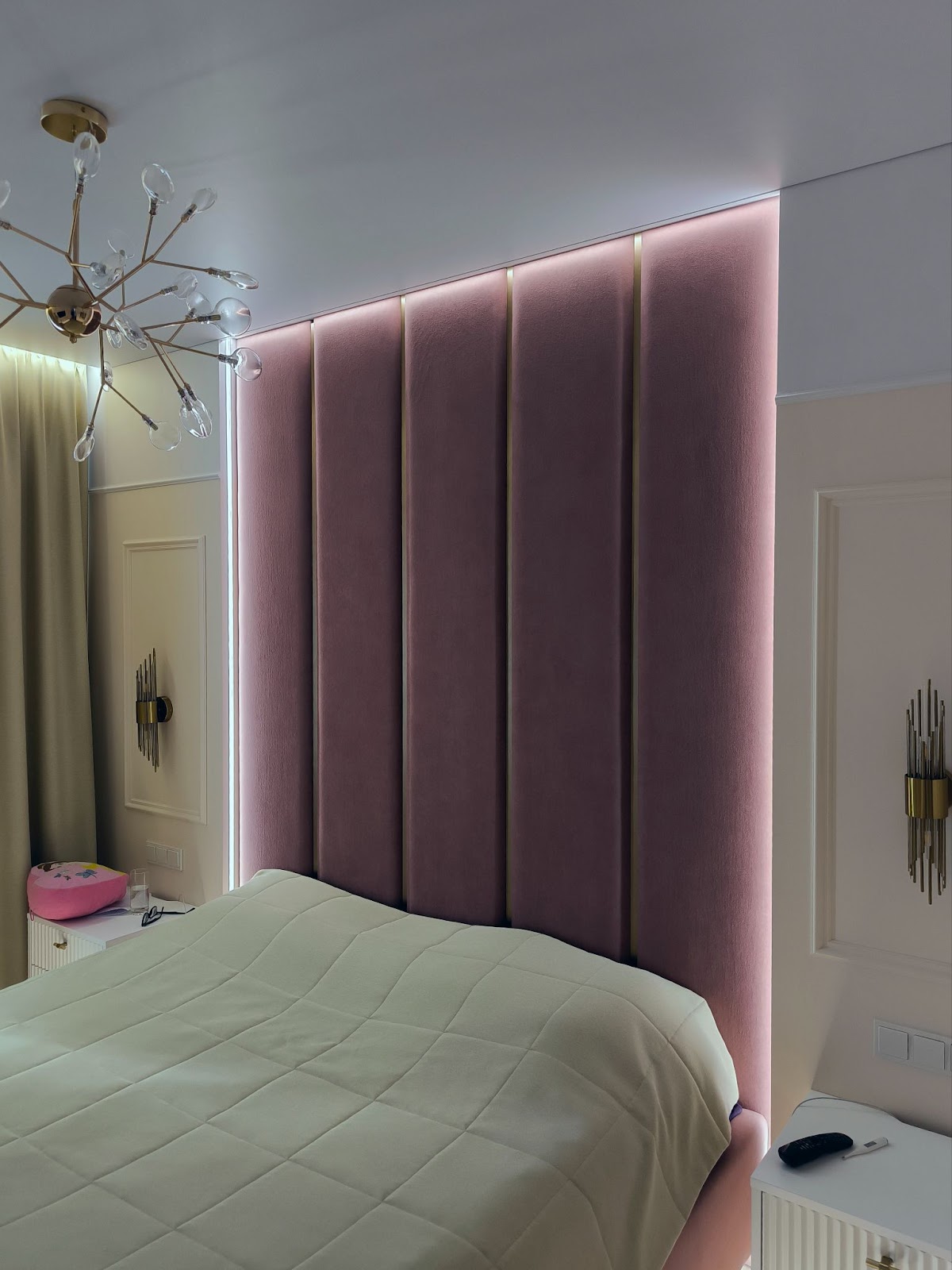



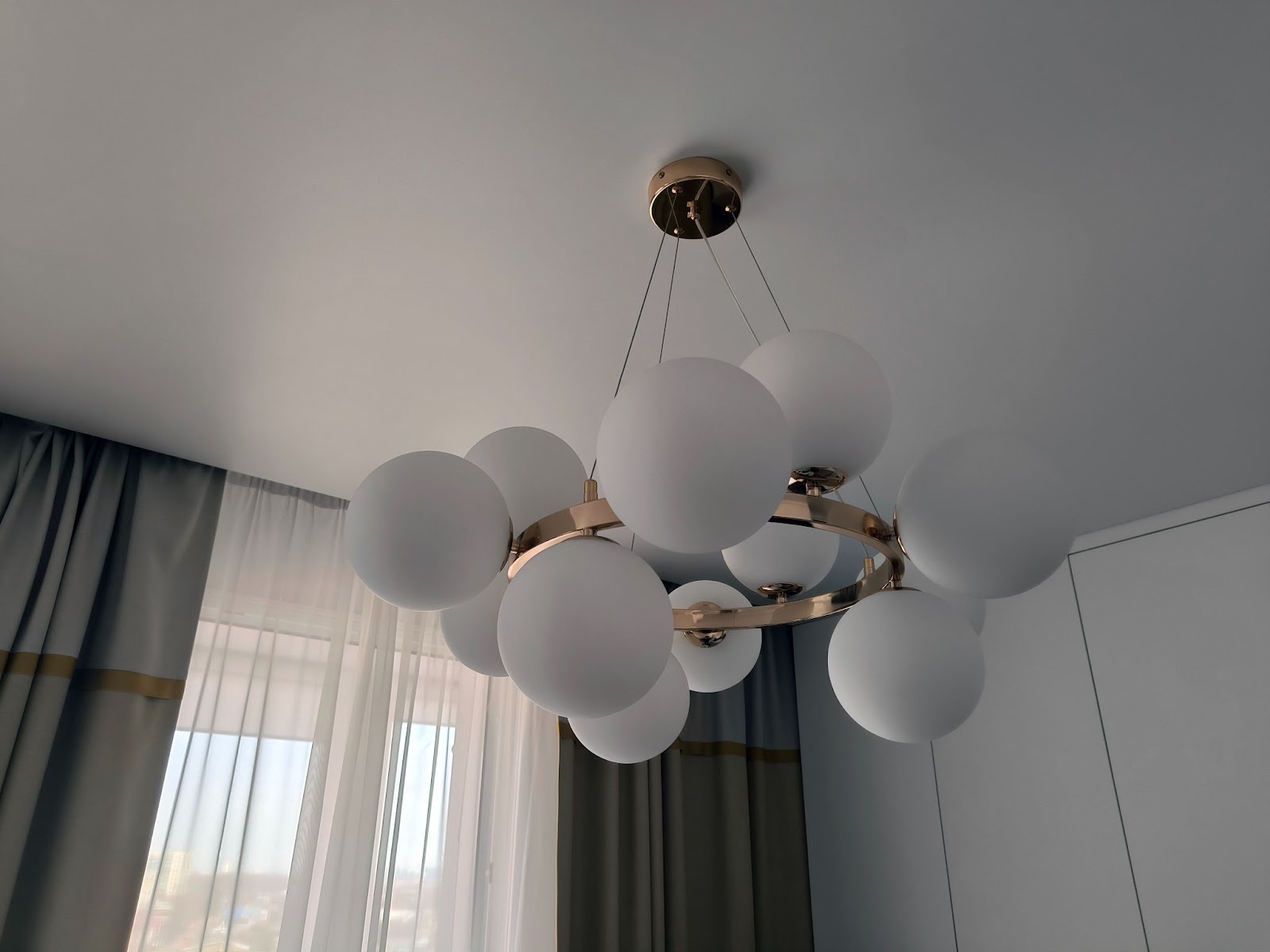
Wired infrastructure
Arthur is an IT specialist, but to develop and install wired infrastructure, he turned to an integrator MROYA.design. A switchboard was installed in the hallway, relay modules were installed in it WB-MR6C v.2dimmers WB-LED with amplifiers WB-AMPLED And controller on Linux. Buttons are connected to the inputs of relay and dimmer modules using low-current twisted pair cables, and lamps and LED strips are connected to the outputs. Relay modules and dimmers have their own microcontroller, so they will work even without a controller and software. But if connected to HomeKit, they can also be controlled from the application.
In total, the apartment has 32 groups of dimmable strips and lamps, 28 of them are regular lights, one socket is for the Christmas tree, and three more are for New Year’s garlands. Sockets are routed to relay modules WM-MRWM2, since Arthur wanted to check how much power the connected devices were consuming. Dimmers only support 5A per channel, so for long LED strips we added amplifiers up to 10A per channel.
Two frequency converters are connected to the controller via Modbus T13-750W-12-H, with which the fans of two hoods operate. The first hood is for the kitchen. In a standard hood above the stove, the fan is removed; it is located further in the exhaust duct. The second hood is for the bathroom, toilet and wardrobe. Frequency converters are needed in order to correctly adjust the air flow during setup.
Sensors are installed in corridors and bathrooms WB-MSW v4 on movement and light, they also measure temperature and humidity. The sensors are connected to the controller via Modbus.
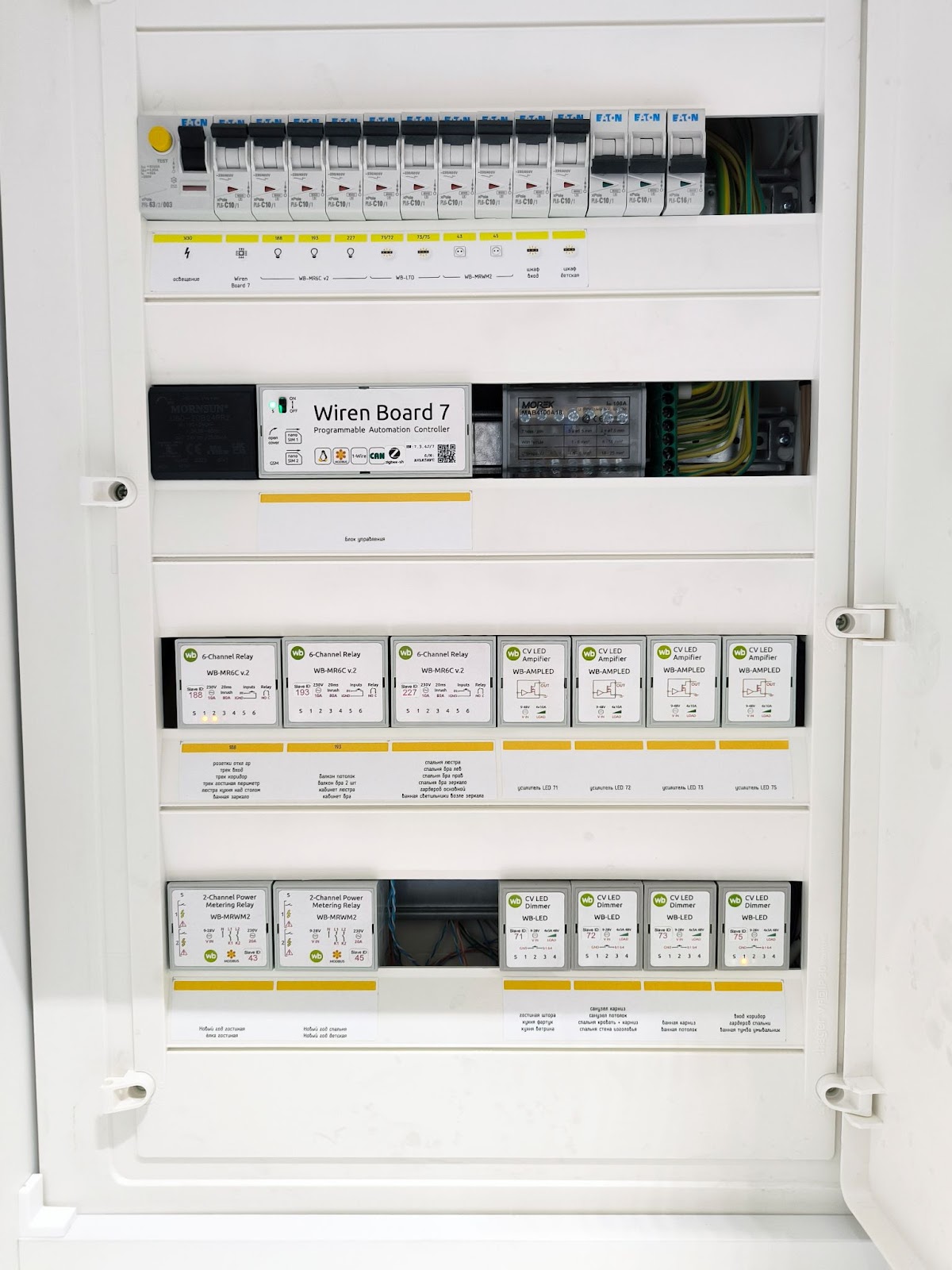
Additional photos
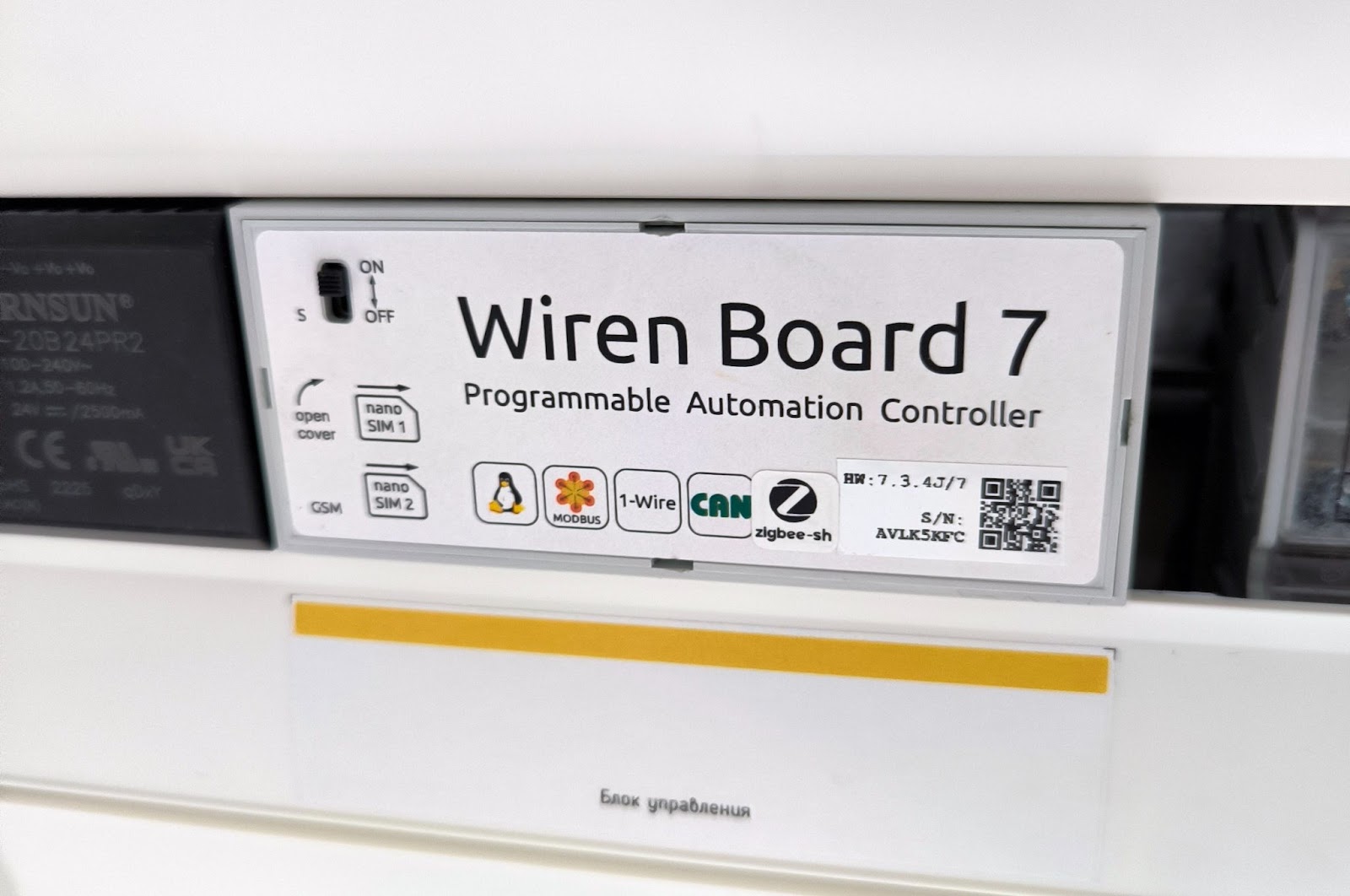
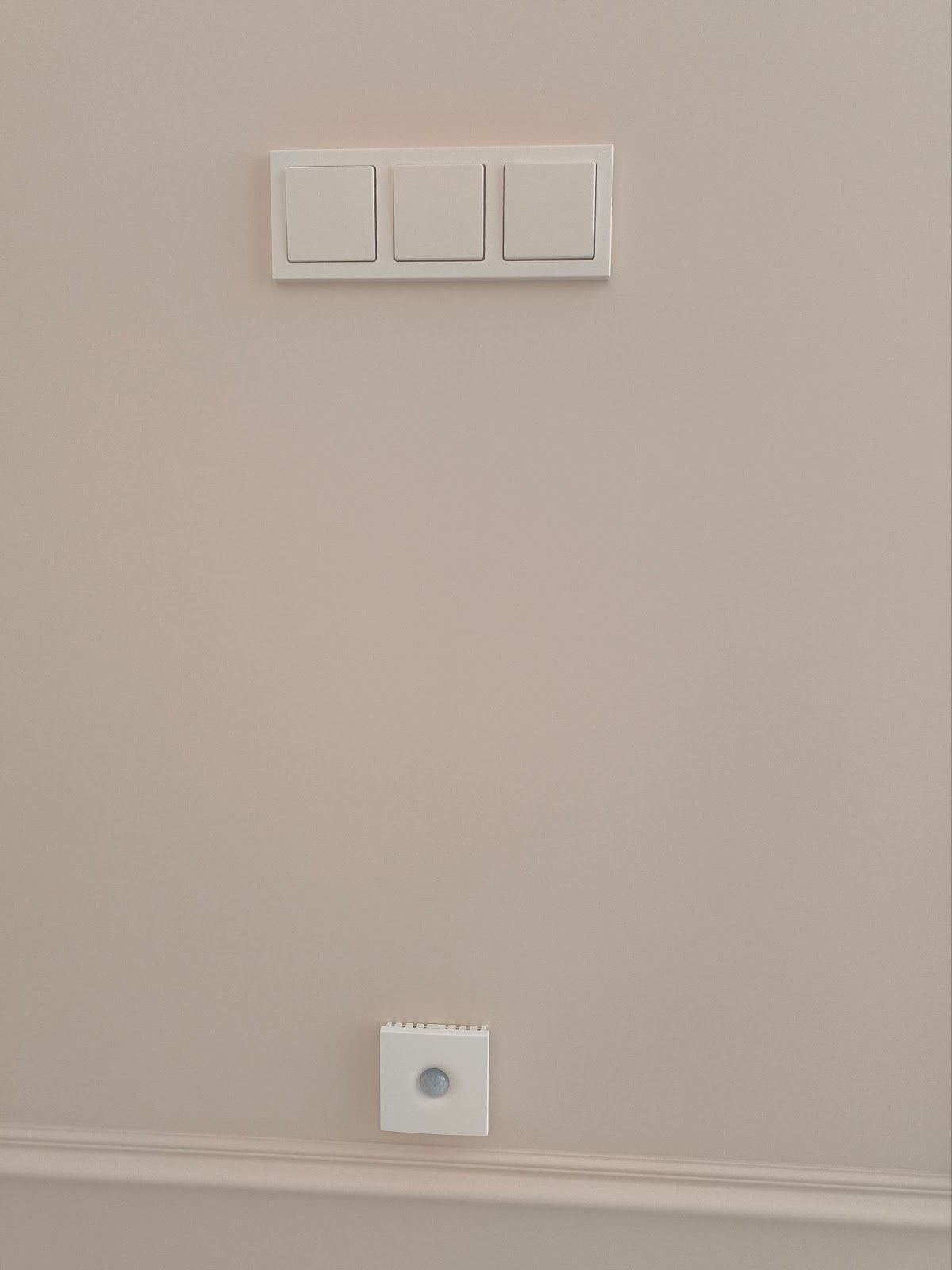
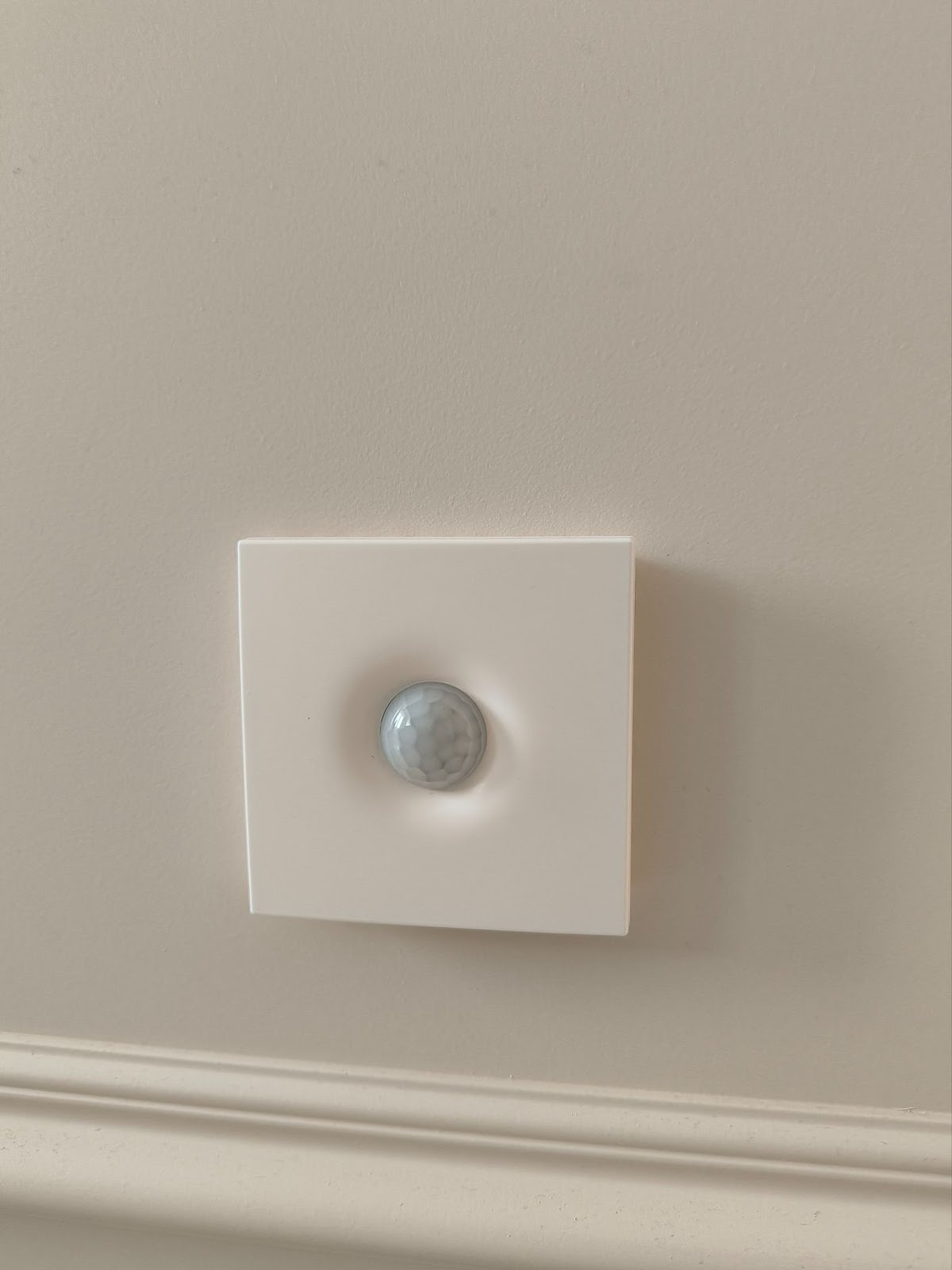
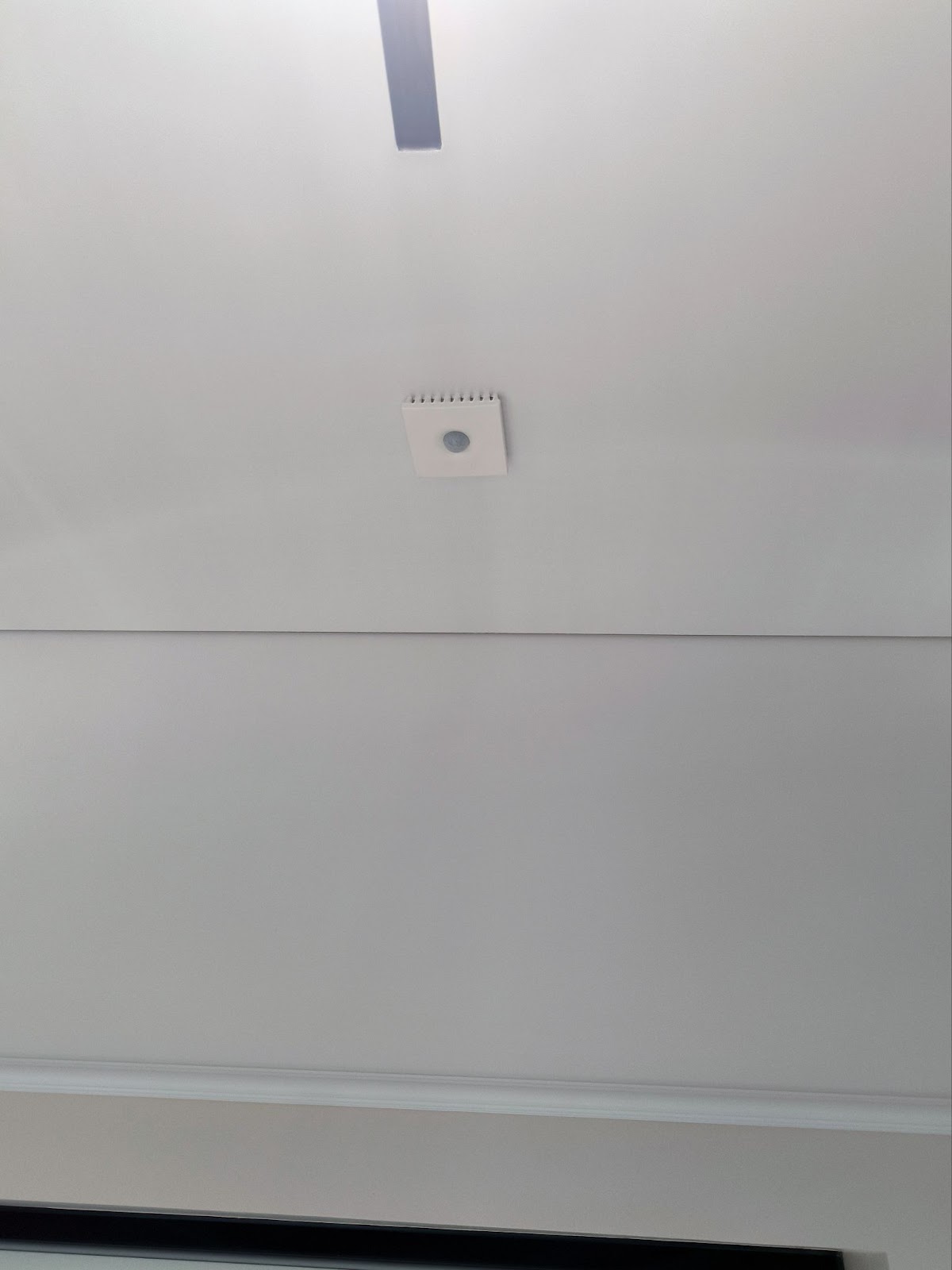
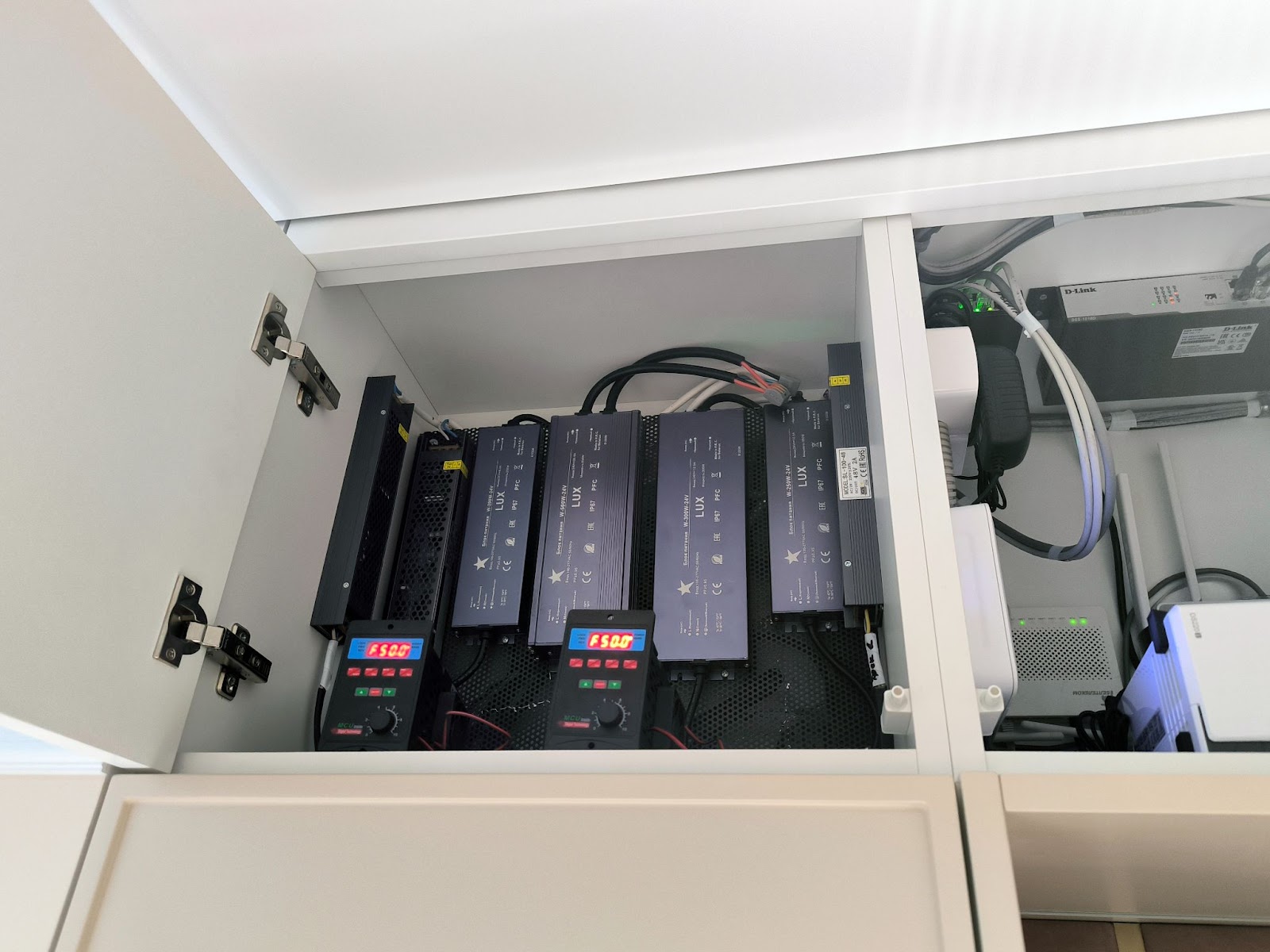
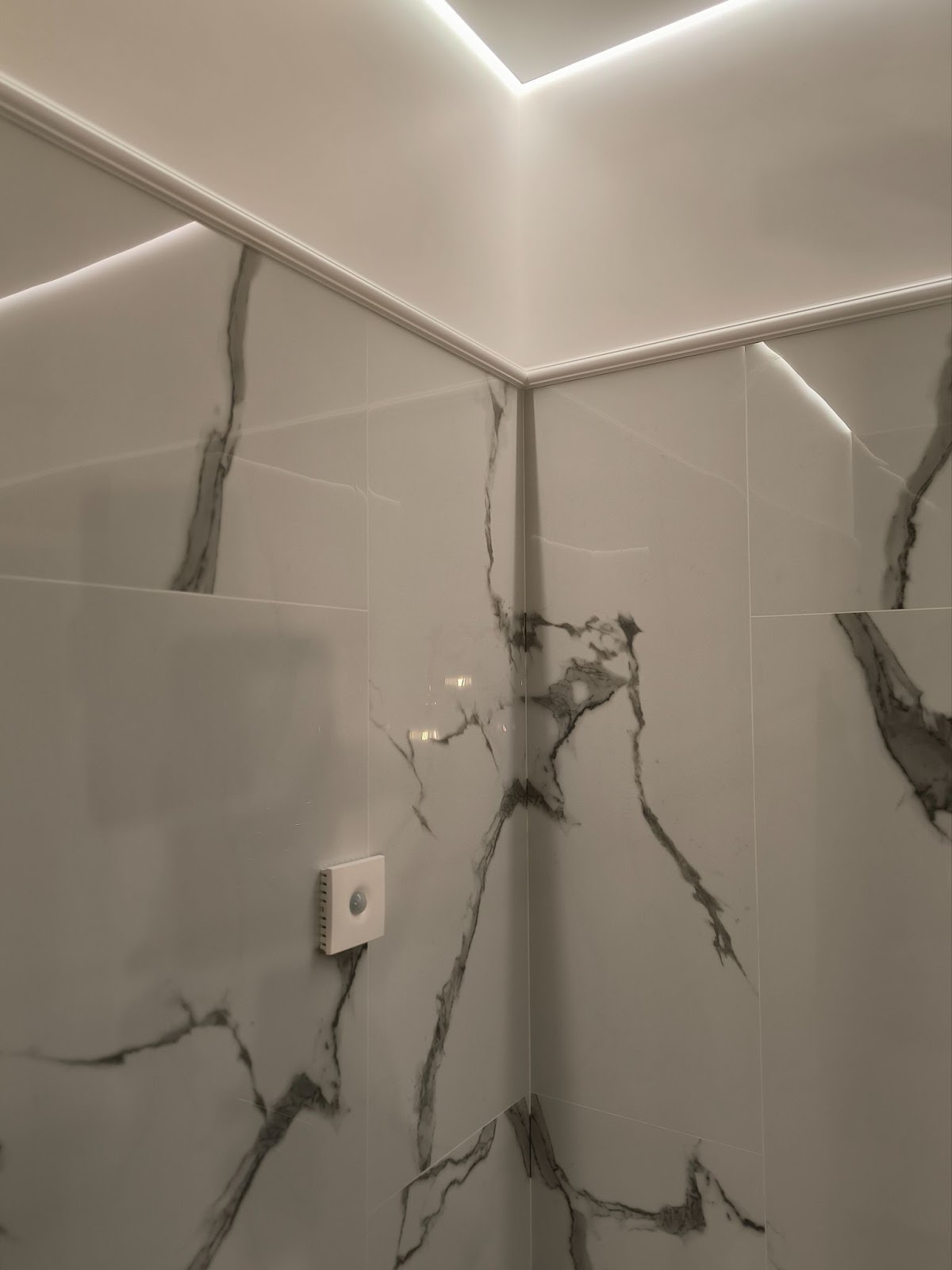
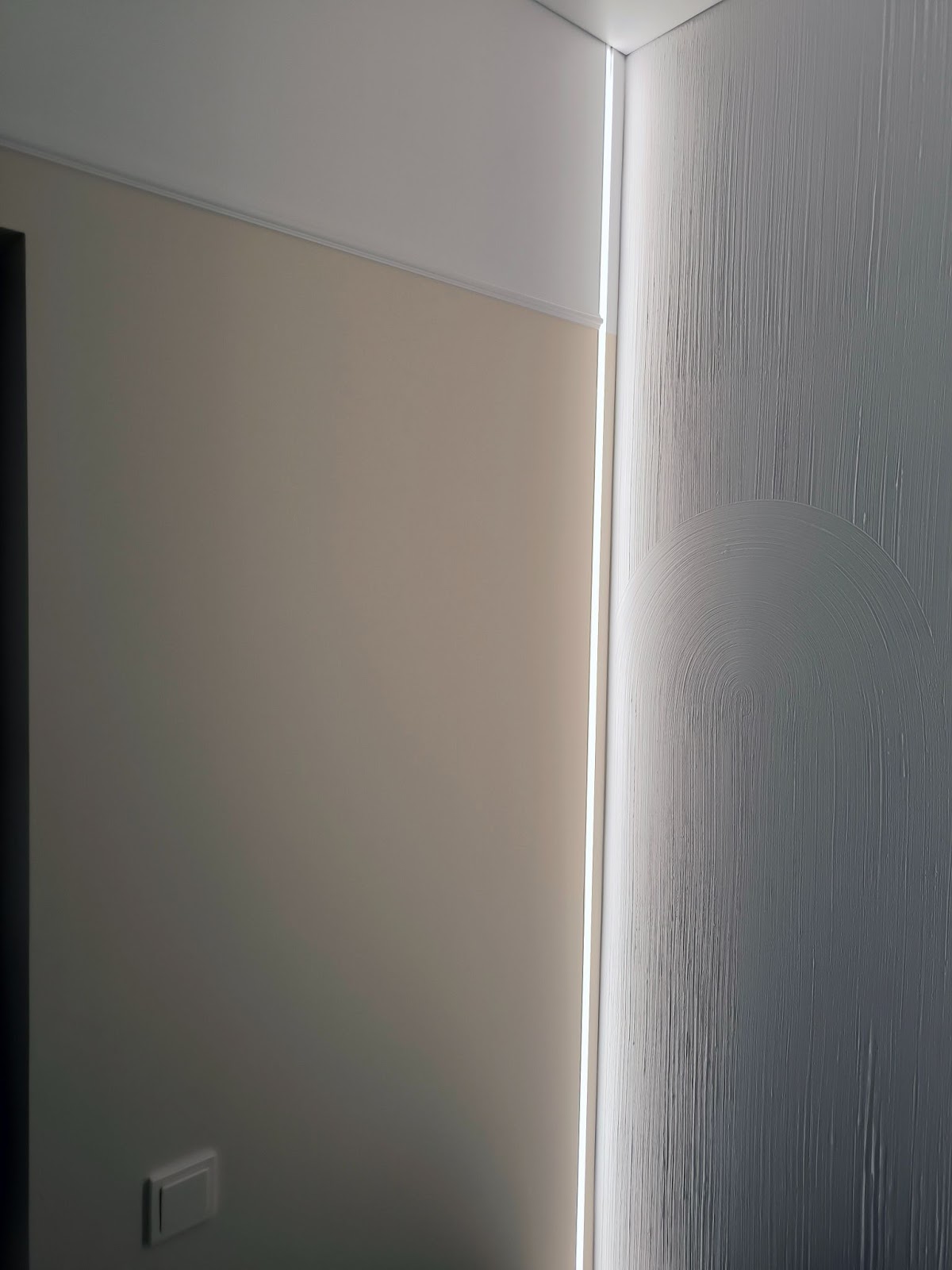
Wireless infrastructure
Arthur added wireless devices to the smart home ecosystem on his own. Let's start with sensors, then consider air conditioners, electric floors and curtains.
Sensors
Opening sensors are installed on the toilet and bathroom doors Aqara MCCGQ11LM, working via Zigbee. Installed on the front door smart lock Aqara N100, which is integrated into a smart home via Wi-Fi and HomeKit. By the way, the new version of the lock supports Zigbee.
A motion sensor was added under the bedside table in the bedroom Aqara Motion Sensor P1, which is used to turn on the night light when you get out of bed. The sensor is connected via Zigbee. Interestingly, Arthur added this sensor later when he realized that he needed a similar scenario. This is where the convenience of Zigbee comes into play – you can expand the capabilities of your smart home as needed.
In wet areas, wireless Neptune leakage sensors are installed, which are connected to their automation controller. It is connected to HomeKit via Wi-Fi.

Additional photos

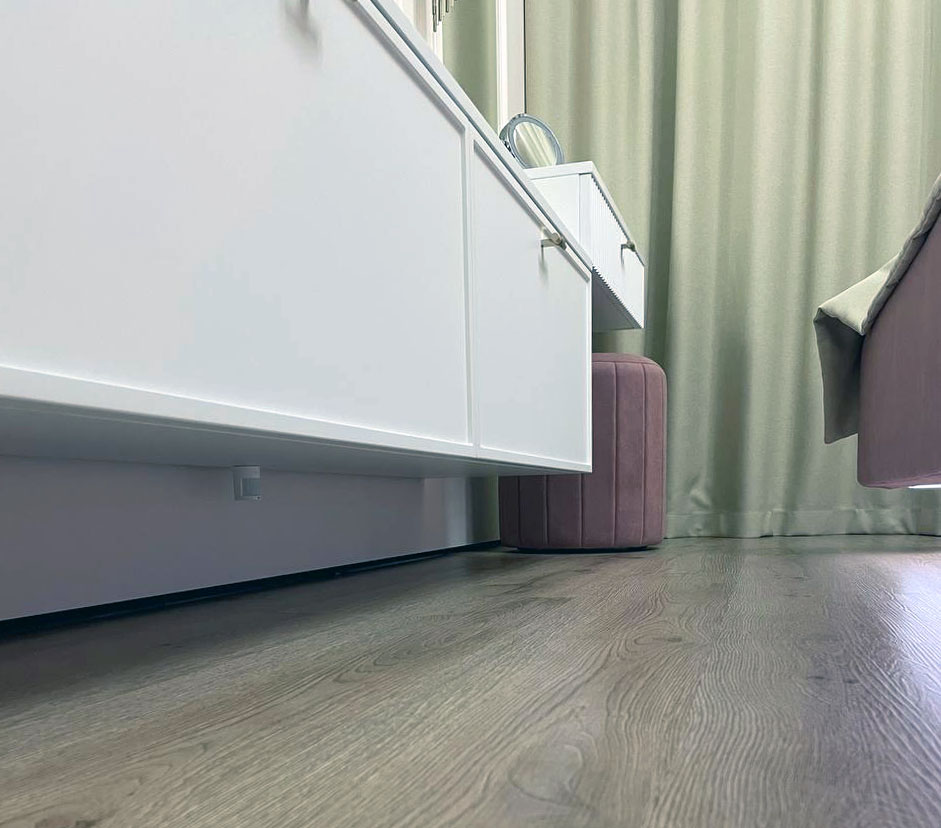
Climate and curtains
The apartment has central heating, all radiators have mechanical valves, but there is no automatic control. As Arthur noted, in winter the apartment is very hot, in fact, only the radiator in the living room is left on, the rest are turned off. In the next heating season, Arthur plans to install one drive to “play with” it.
There are six groups of warm electric floors: in the kitchen, living room, corridor and hallway, balcony, bathroom and bathroom. Six Tuya WiFi thermostats are installed here; they are integrated into HomeKit and included in Sprut.Hub.
The apartment has three LG Smart Inverter air conditioners (living room, children's room, bedroom), they support Wi-Fi, through which they are integrated into HomeKit.
The curtains on all windows are equipped with Tuya WiFi motors. They are also integrated into HomeKit via Wi-Fi and included in Sprut.Hub.
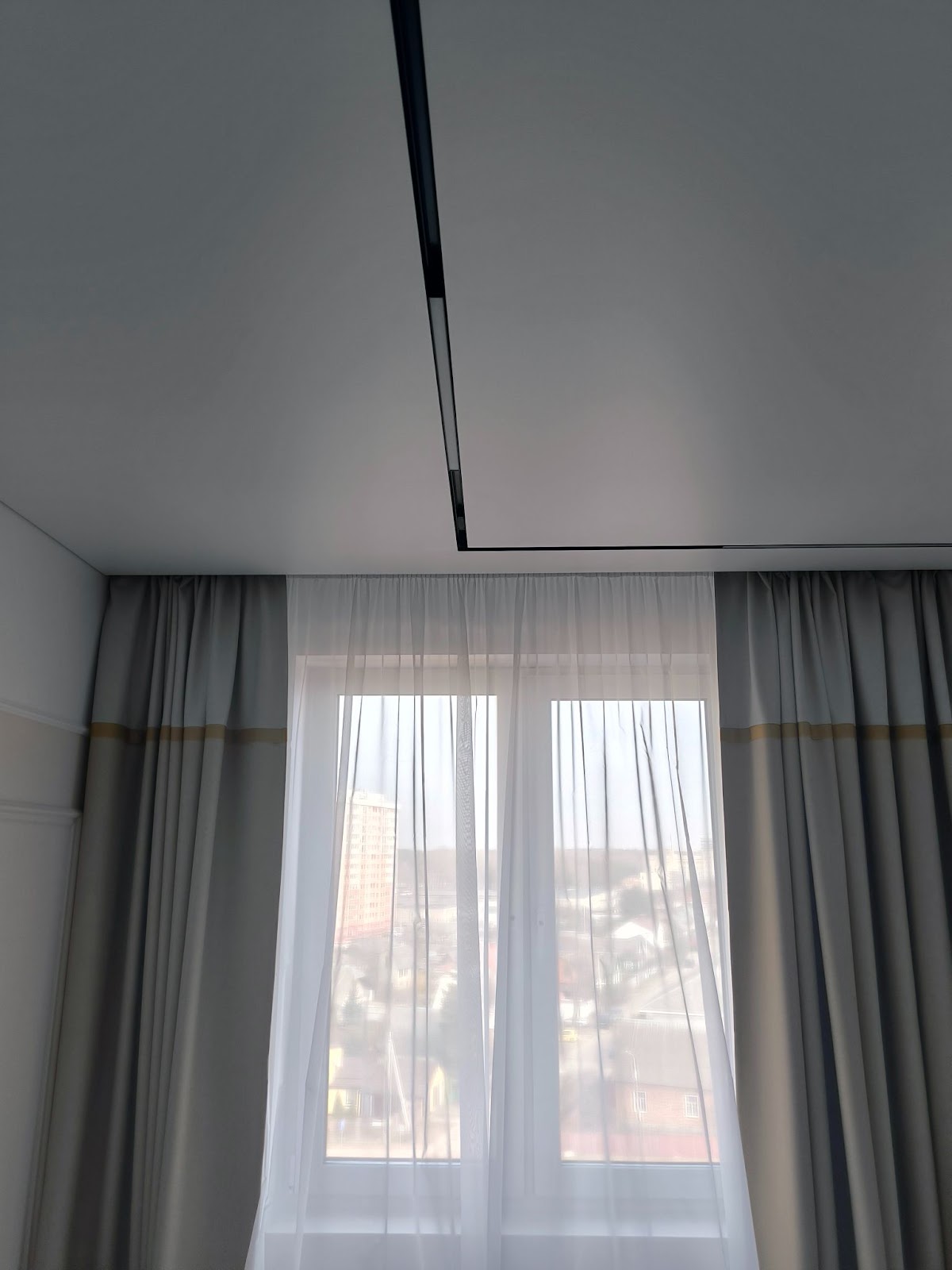
Additional photos
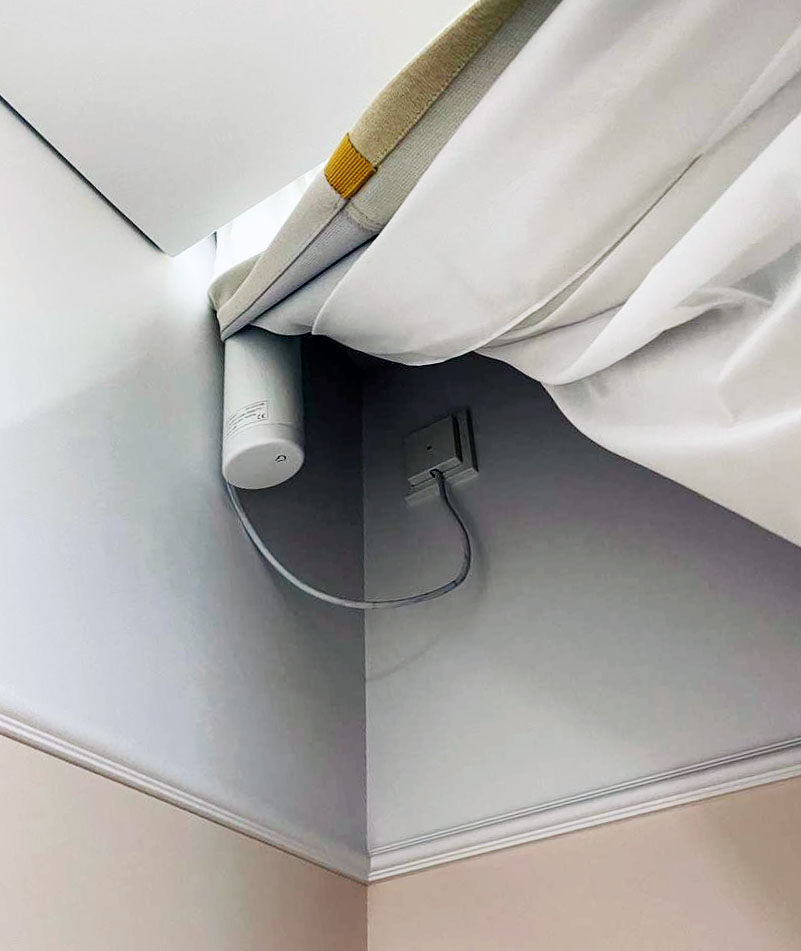
Software ecosystem and scenarios
The smart home controller has a stick installed Sprut.stick ZigBee WBE2R-R-ZIGBEE-SH licensed by Sprit.Hub. That is, support for ZigBee wireless devices will also be a bonus here. So far, a couple of sensors are connected via Zigbee. But no one is stopping you from expanding the capabilities of the system in the future.
The controller has a shell installed Sprut.HubArthur prefers to use it for most scenarios, although some are written in the controller’s native wb-rules scripts.
The HomeKit bridge has been added to Sprut.Hub, which makes it possible to link WiFi devices to the Sprut.Hub shell. And, in the opposite direction, link wired smart home devices to Apple HomeKit. Support for voice control via Alice has also been added. Alerts can be sent to a telegram channel through the appropriate Sprut.Hub integration.

Additional photos

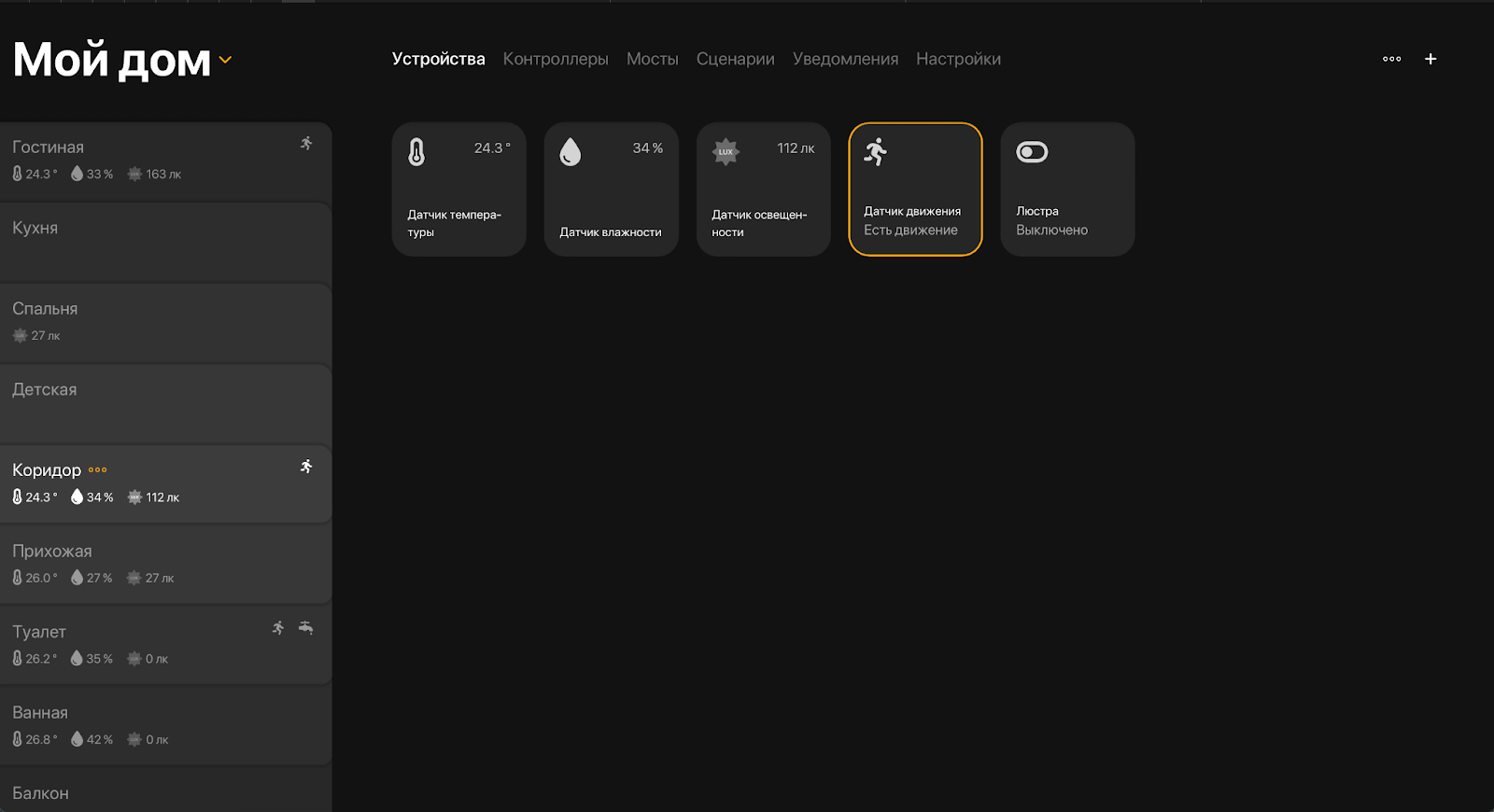
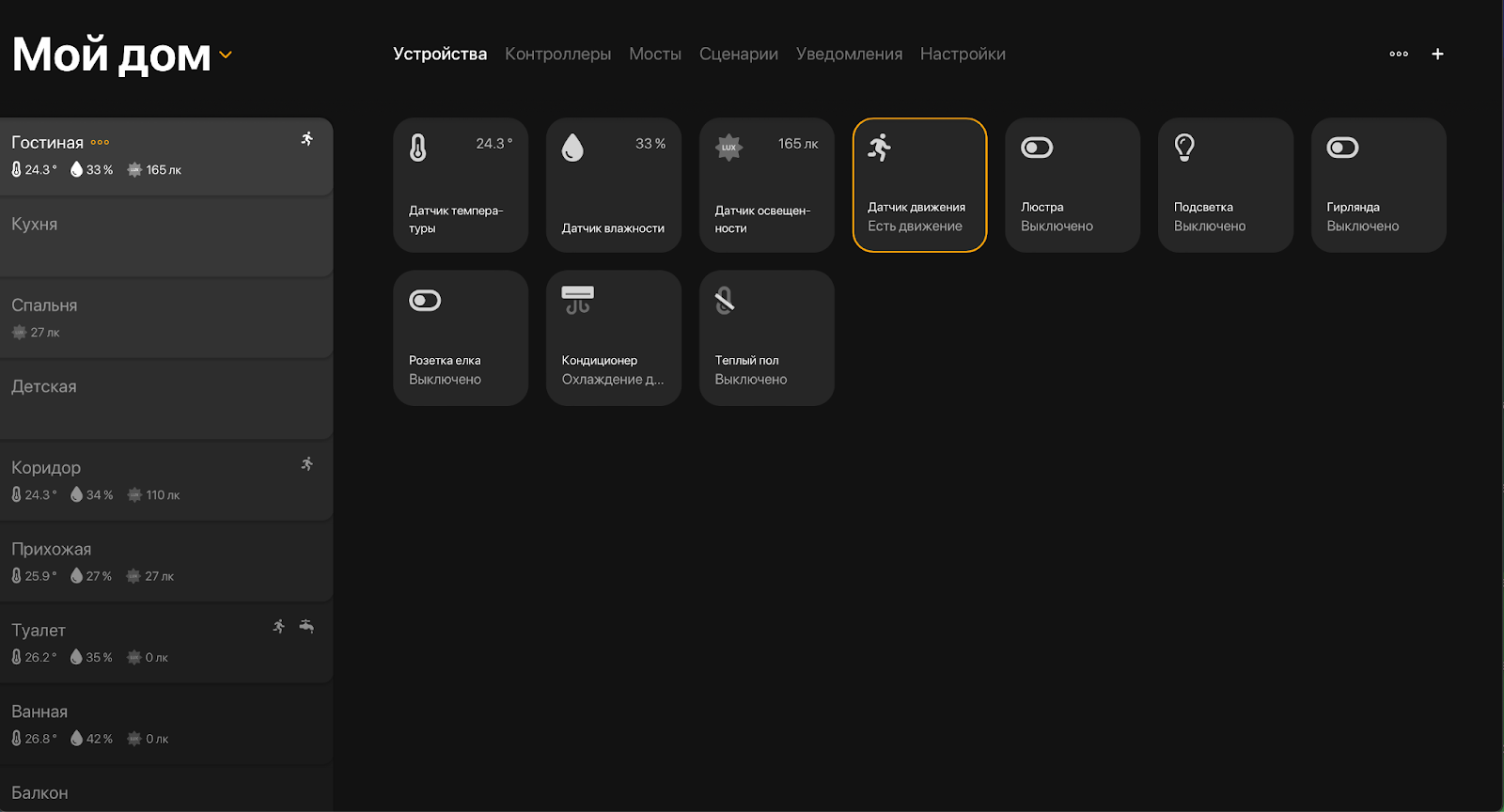
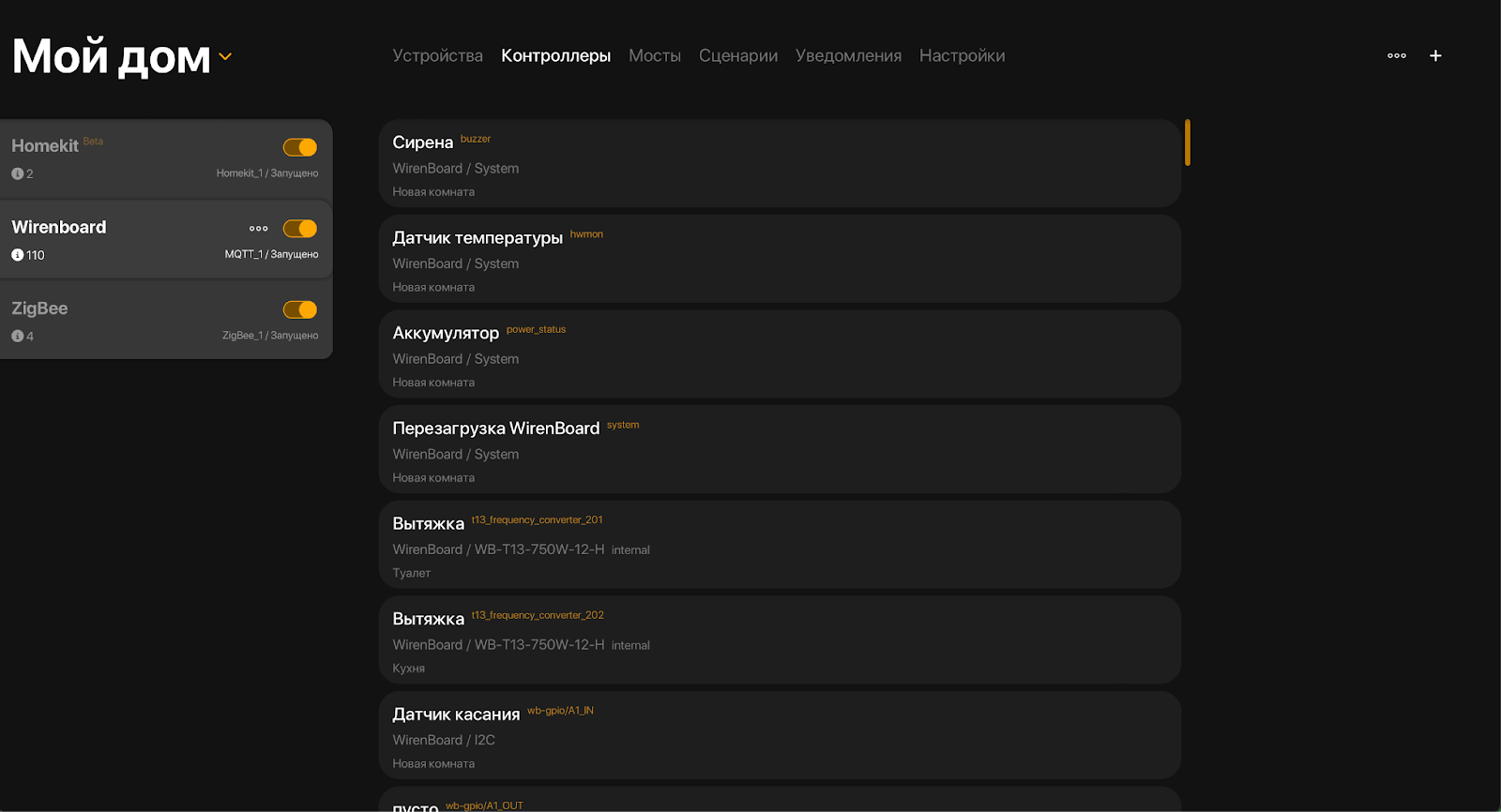
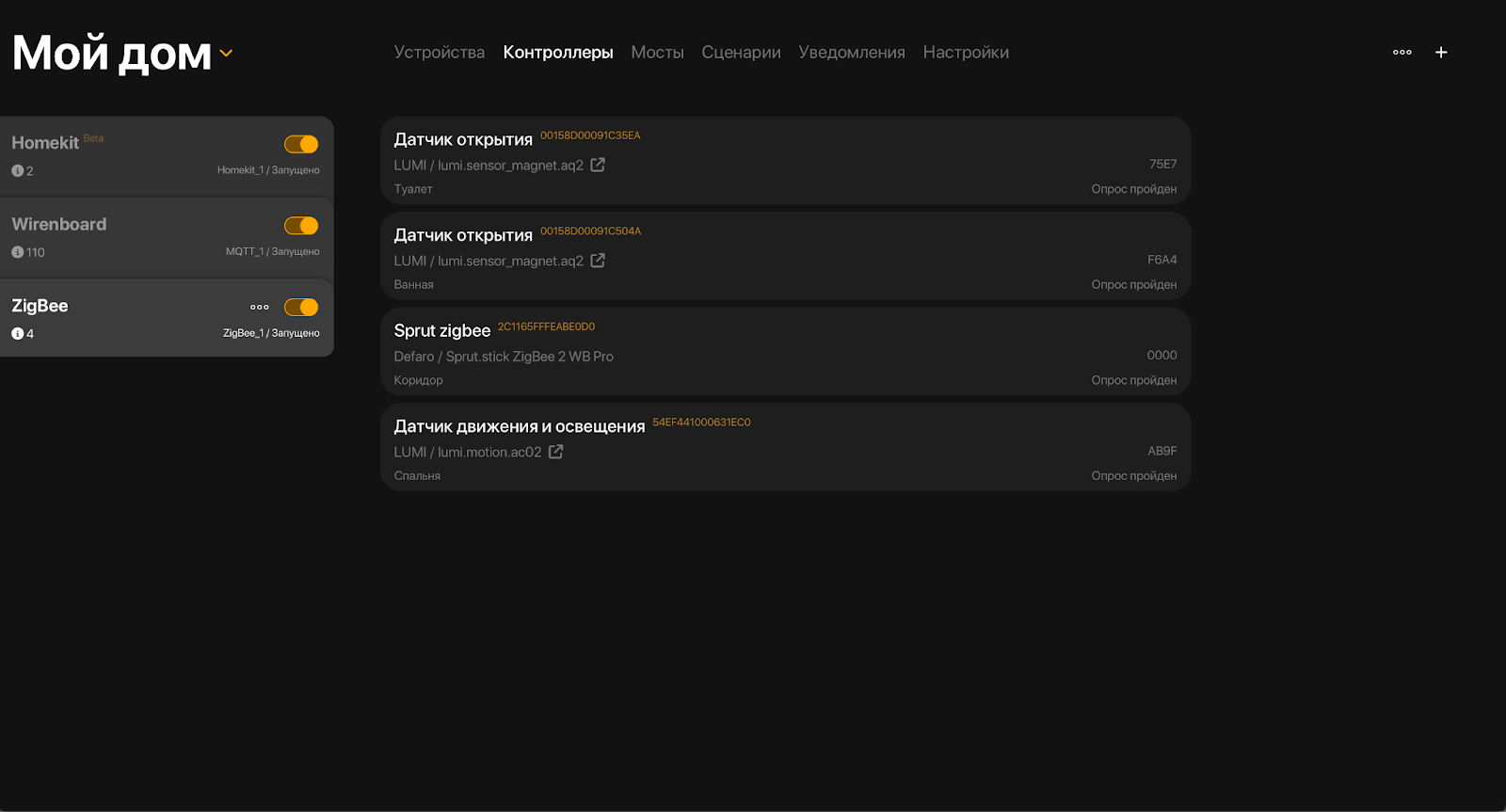

Scenarios
It’s hard to imagine a smart home without scripts – Arthur programmed most of them using Sprut.Hub logic, they work locally. But there are scripts that work through voice control and the cloud. For example, the scenario “Alice, let's go to bed” turns off all the lights in the apartment, turns on dim lighting for the mirror in the bathroom, tape in the hallway and under the bed. A physical button has been added to the bed; a long press turns off all the lights.
There is a master switch – it turns off the sockets from the group being switched off and all the lights. Leaves power to the router, controller, refrigerator and washing machine.
Motion is detected by sensors in the corridor, bathroom and restroom; regular light is turned on during the day, and a low-brightness LED strip turns on at night. In general, Arthur set the tapes to the levels that were comfortable for him. For example, in the corridor the brightness of the LED strip is set to 80%.
After our visit to the apartment, Arthur added wireless door opening sensors in the bathroom and toilet, which turn on the light without delay, and then continue to light if movement is detected. As we noted above, another Zigbee motion sensor is installed in the bedroom under the nightstand to turn on the night light if someone gets out of bed.
The hood fan in the bathroom, wardrobe, or bathroom is switched on by a humidity sensor when the set level is exceeded. By pressing the button, the fan can be turned on for 5 minutes. In automatic mode, the fan turns on every hour for 10 minutes.
Warm floors in the apartment are turned on according to scenarios programmed in Sprut.Hub. On even days at 4 am, on odd days at 8 am. The fact is that Arthur’s wife works on even days and gets up early. Curtains open and close according to the same schedule.

Additional photos
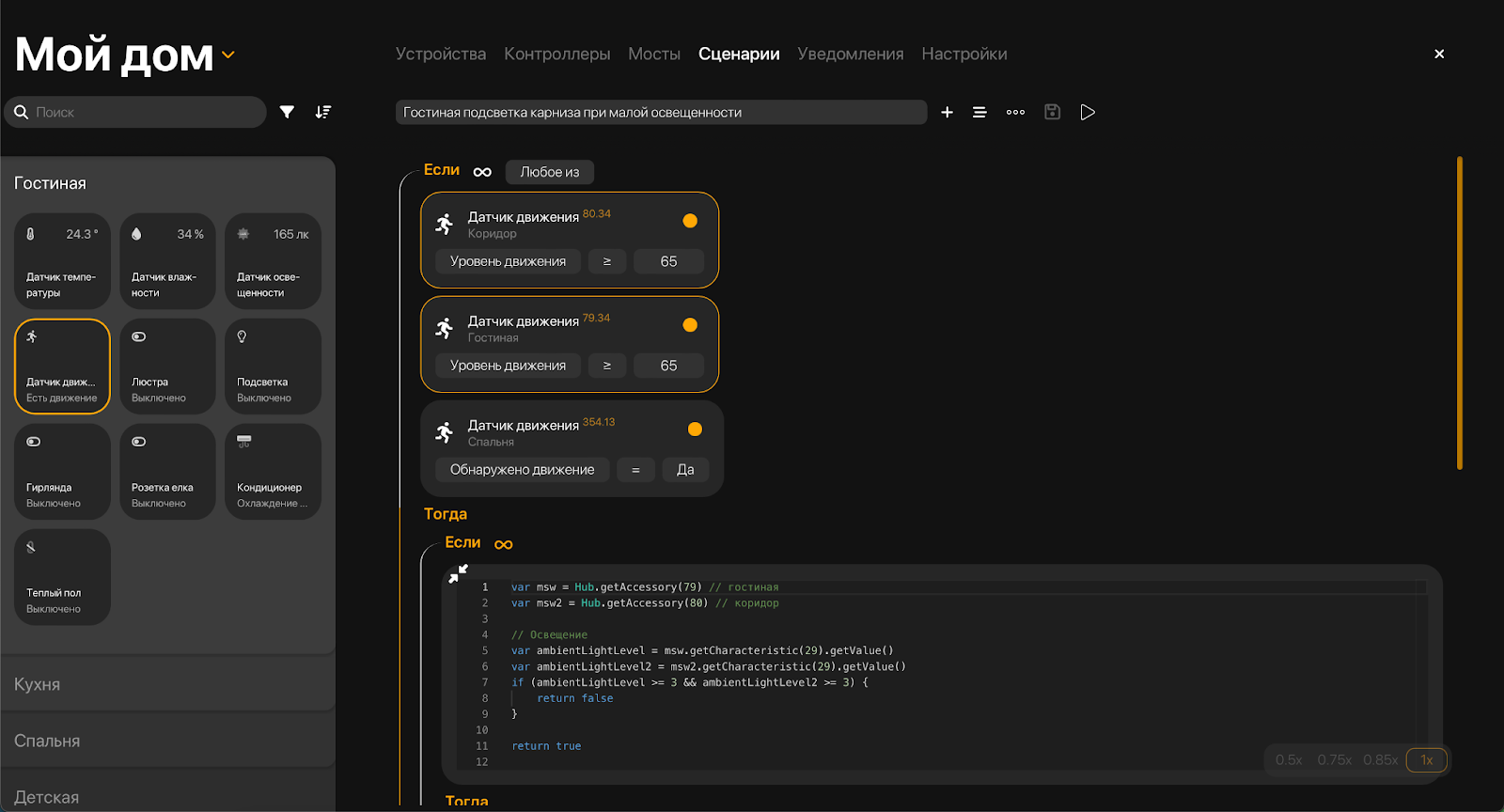
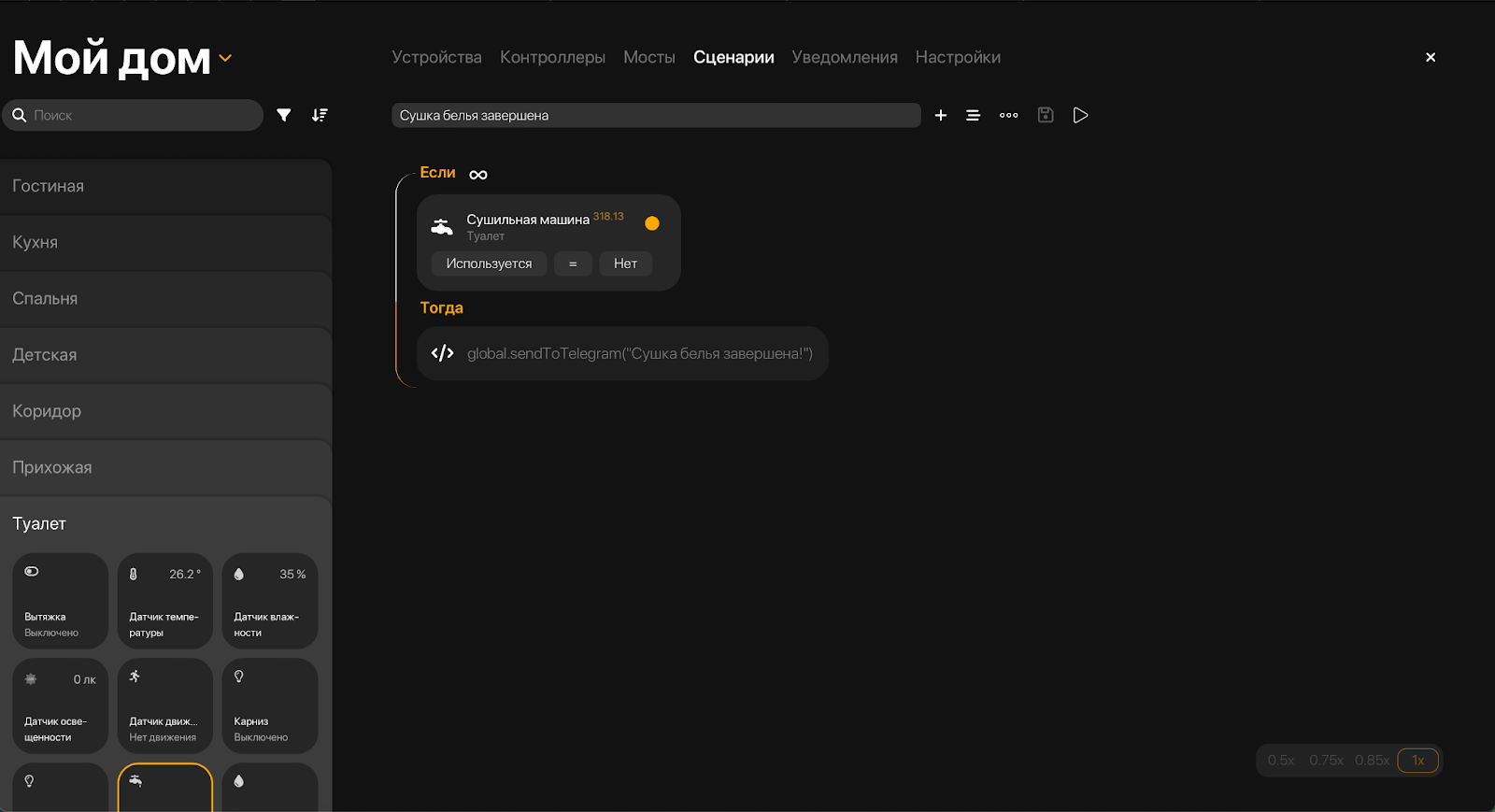

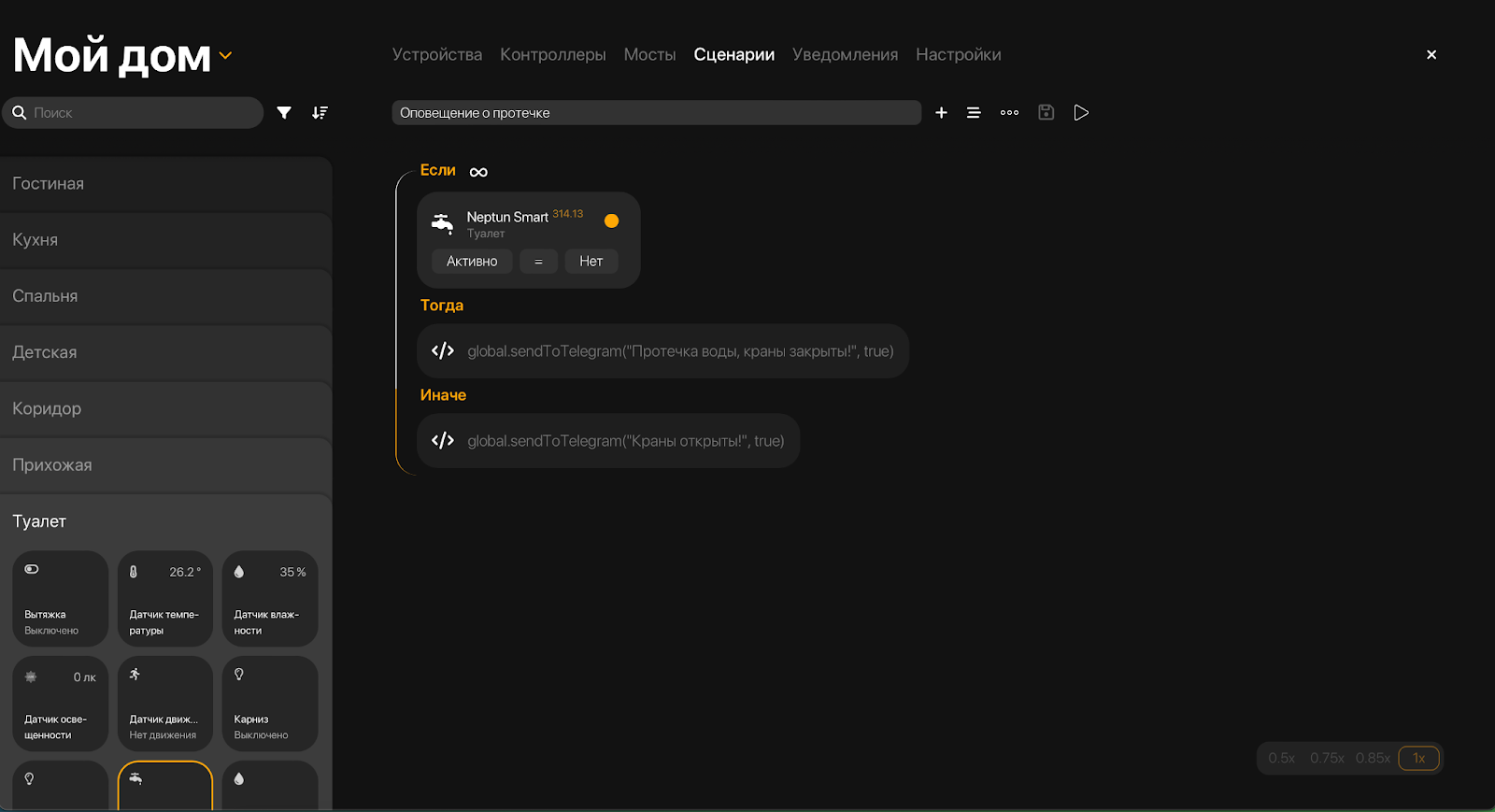



Conclusion
Today, vendors offer different smart home platforms, devices and technologies, but which ones should you choose? In the article, we looked at the example of IT specialist Arthur, who began to think through a smart apartment from the rough finishing stage. At first he wanted to make a smart home entirely on Wi-Fi and Apple HomeKit, but then abandoned this idea.
Arthur chose a hybrid solution, but didn’t want to bother with wires, so he turned to an integrator. As a result, lamps and dimmable strips are connected by wires to the corresponding modules in the panel; they are turned on by physical keys, but at the same time integrated into the smart home. As a result, the light can be turned on in the application or according to scenarios.
Arthur integrated the remaining smart apartment devices into the HomeKit and Sprut.Hub ecosystem himself, and wrote the scripts himself. Thanks to Zigbee support in the controller, he was able to refine his project after our visit: adding wireless door sensors and a motion sensor under the bedside table in the bedroom.
The conclusion is simple: vital functions of a smart apartment, such as light, must be wired. And all other comfort-enhancing devices, such as air conditioners, heated floors, curtain motors and vacuum cleaners, can be connected via a wireless network.
What do you think about this project? How can it be improved? Perhaps there is something you would have done differently? Share your ideas in the comments.
Come April 25 and 26 to us at annual exhibition and conference WBCE. There you can communicate with the developers of Wiren Board equipment, visit the production facility on a tour, touch the devices and see ready-made solutions from partners from a variety of industries.




